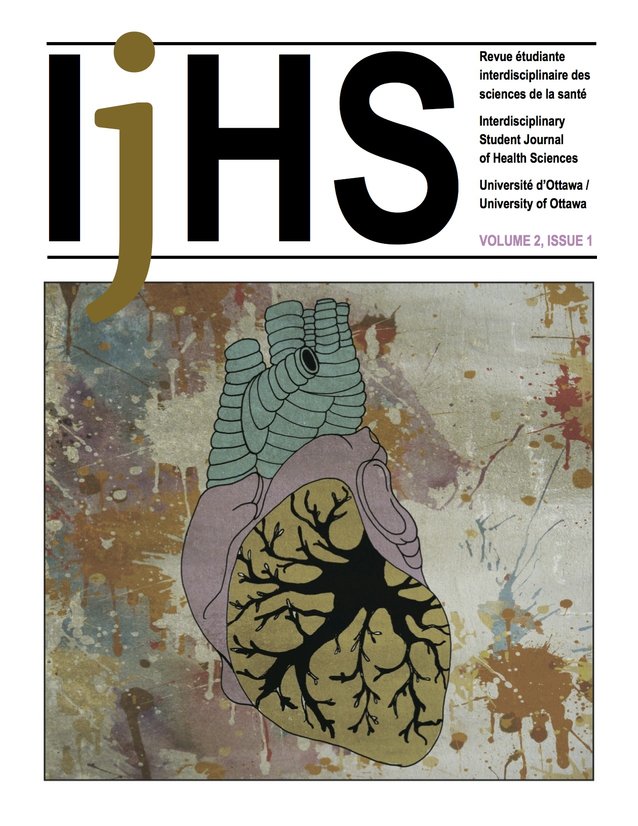SmartHand: A Sense of Assistive Devices
DOI:
https://doi.org/10.18192/riss-ijhs.v2i1.1527Keywords:
Assistive device technology, disabled living, amputees, myoelectric prosthesesAbstract
Amputees have often faced social stigma attributable to their visible limb loss or use of artificial substitutions. In recent years, the use of prosthetics has become much more advanced, particularly in the field of sensory prostheses. One such assistive device, a new prototype technology known as the SmartHand, has recently been featured on several news networks. It is through this discussion that the SmartHand will be reviewed and compared with existing platforms that include myoelectric prostheses and targeted muscle reinnervation. Use of the SmartHand has been noted as having increased levels of competence in and improved the quality of life of its users. These conclusions also bring to light the scientific barriers that are faced, primarily with respect to tissue rejection. The cost benefit analysis of such a device may also produce conflicting data, thereby making it difficult to implement this device on a larger scale. Despite these problems, the SmartHand represents one of the most scientifically advanced assistive devices available in today’s market, whose usefulness for amputees is undeniable.
References
Canadian Agency for Drugs and Technologies in Health. (2007). Medical device regulation in Canada: A primer. Retrieved from http://www.cadth.ca/products/ environmental-scanning/health-technology-update/health -technology-update-issue5/medical-device
Chung, K. C., Oda, T., Saddawi-Konefka, D., & Shauver, M. J. (2010). An economic analysis of hand transplantation in the United States. Plastic and Reconstructive Surgery, 125 (2), 589-598. doi: 10.1097/PRS.0b013e3181c82eb6
Hunter, J. P., Katz, J., & Davis, K. D. (2005). Dissociation of phantom limb phenomena from stump tactile spatial acuity and sensory thresholds. Brain, 128(2), 308-320. doi: 10.1093/brain/awh350
Marasco, P. D., Schultz, A. E., & Kuiken, T. A. (2009). Sensory capacity of reinnervated skin after redirection of amputated upper limb nerves to the chest. Brain, 132(6), 1441 -1448. doi: 10.1093/brain/awp082
Miller, L. A., Stubblefield, K. A., Lipschutz, R. D., & Kuiken, T. A. (2008). Improved myoelectric prosthesis control using targeted reinnervation surgery: A case series. IEEE Transactions on Neural Systems and Rehabilitation Engineering, 16(1), 46-50. doi: 10.1109/TNSRE.2007.911817
Parker, P., Englehart, K., & Hudgins, B. (2006). Myoelectric signal processing for control of powered limb prostheses. Journal of Electromyography and Kinesiology, 16 (6), 541-548. Retrieved from http://www.jelectromyographykinesiology.com/
Peramo, A., & Marcelo, C. L. (2010). Bioengineering the skin-implant interface: The use of regenerative therapies in implanted devices. Annals of Biomedical Engineering, 38 (6), 2013-2031. doi: 10.1007/s10439-010-9937-1
Pylatiuk, C., Schulz, S., & Doderlein, L. (2007) Results of an internet survey of myoelectric prosthetic hand users. Prosthetics and Orthotics International, 31(4), 362- 370. doi: 10.1080/03093640601061265
Scherer, M., Jutai, J., Fuhrer, M., Demers, L., & Deruyter F. (2007). A framework for modeling the selection of assistive technology devices (ATDs). Disability and Rehabilitation: Assistive Technology, 2(1), 1-8. doi: 10.1080/17483100600845414
Tutton, M. (2009, November 6). The artificial hand that can ‘feel’. CNN. Retrieved from http://www.cnn.com/
Weir, R. F., Troyk, P. R., DeMichele, G., & Kerns, D. (2005). Technical details of the implantable myoelectric sensor (IMES) system for multifunction prosthesis control. Conference proceedings: Annual International Conference of the IEEE Engineering in Medicine and Biology Society, 7, 7337-7340. doi: 10.1109/IEMBS.2005.1616206
Ziegler-Graham, K., MacKenzie, E. J., Ephraim, P. L., Travison, T. G., & Brookmeyer, R. (2008). Estimating the prevalence of limb loss in the United States: 2005 to 2050. Archives of Physical Medicine and Rehabilitation, 89(3), 422-429. doi: 10.1016/j.apmr.2007.11.005
Downloads
Published
Issue
Section
License
- All authors published in the IJHS will retain copyright of their article.
- Authors grant the IJHS the right of first publication of their submitted articles.
- All articles published in the IJHS are licensed under a Creative Commons Attribution License that allows others to share articles if original authors and journal of initial publication are acknowledged.
- The IJHS is published online and in print, therefore the journal is not responsible for any unauthorized misuse of published content in either electronic or print form
- The IJHS retains the serial distribution rights to all contents
- It is the responsibility of the authors and not the IJHS to ensure proper permissions for all cited work have been obtained


